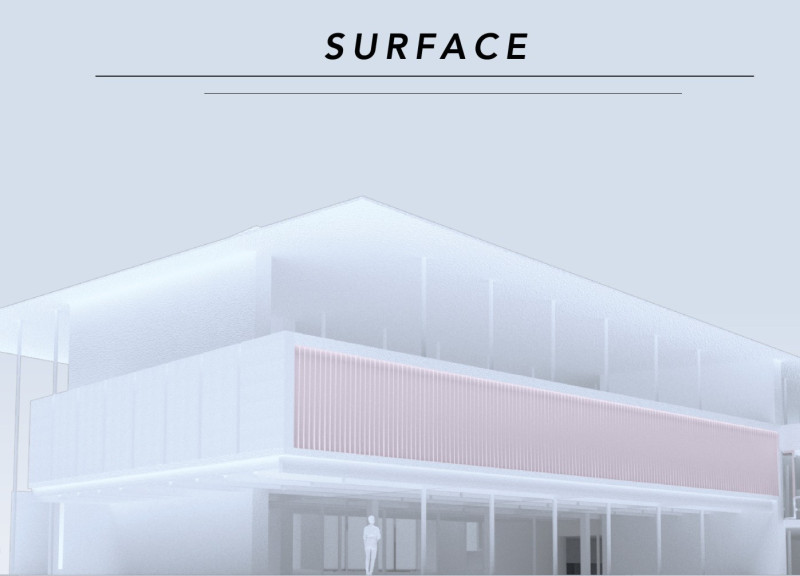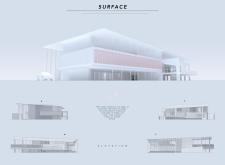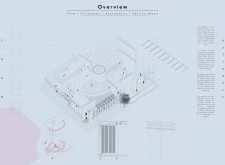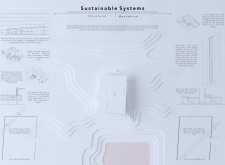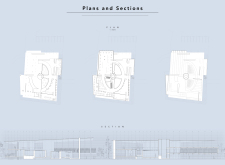5 key facts about this project
At its core, this architectural design emphasizes the concept of a multi-function environment, integrating various areas like retail spaces, waiting rooms, workstations, and communal spaces such as a café and display room. The layout is organized around a central circular ramp, which not only functions as a primary circulation path but also encourages interaction among users. This design approach promotes a sense of community, allowing individuals to flow seamlessly between different zones, enhancing social connectivity within the space.
The architectural elements are characterized by a unique massing strategy that involves distinct elevations for each side of the building. The façade is designed with a combination of materials, including composite panels and expansive glass sections which serve to enhance natural light penetration. The choice of a light color palette for the dominant materials results in a harmonious integration with the building’s surroundings. Notably, a distinctive pink-hued screen is employed as an attractive design feature that softens the overall structure while adding a layer of visual depth.
Materiality plays a crucial role in the overall design. The project utilizes materials such as reinforced concrete for structural strength, lightweight composite panels for durability, glass to create transparency, and steel to provide the necessary framework. Wood elements add warmth to the design, contributing an essential contrast that enriches the sensory experience within the space. These material choices collectively resonate with the contemporary architecture movement, emphasizing sustainability, durability, and aesthetic quality.
Sustainability is a key consideration embedded within the architectural design. The roof features a lofted design that facilitates natural ventilation, channeling breezes through the building to enhance indoor air quality. Photovoltaic panels are integrated into the roof system, harnessing solar energy to reduce dependence on conventional energy sources. In addition, adjustable shading devices are included to regulate light and promote energy efficiency during daylight hours.
The interior layout is designed to complement the exterior’s architectural principles, with open spaces that allow for flexibility in usage and encourage collaboration. The circular ramp not only guides movement but also acts as a gathering space, fostering a sense of belonging and interaction among occupants. This integral design choice enhances the user experience by creating a central hub that invites individuals to pause, interact, and connect.
Moreover, the adaptability of this project to its geographical context is a significant aspect of its conceptual framework. The structure’s design responds thoughtfully to local climate conditions, which informs material selection and building orientation to maximize thermal efficiency and natural light. This engagement with the environmental context emphasizes a responsible approach to architecture that respects and enhances the natural surroundings.
The unique elements embedded within this architectural project demonstrate a comprehensive understanding of modern design trends and community engagement. By integrating various spaces within a coherent layout, emphasizing sustainable building practices, and selecting appropriate materials, this project stands as a relevant example of how architecture can be both functionally adept and visually appealing.
For those interested in a deeper exploration of this project, including architectural plans, architectural sections, and architectural ideas, it is highly encouraged to delve into the detailed presentation of the design. Engaging with these elements will provide valuable insights into how this architecture achieves its goals of functionality, sustainability, and community engagement. The project reflects a meaningful architectural narrative that balances practical needs with thoughtful design, promising to make a positive impact on the experience of its users.


